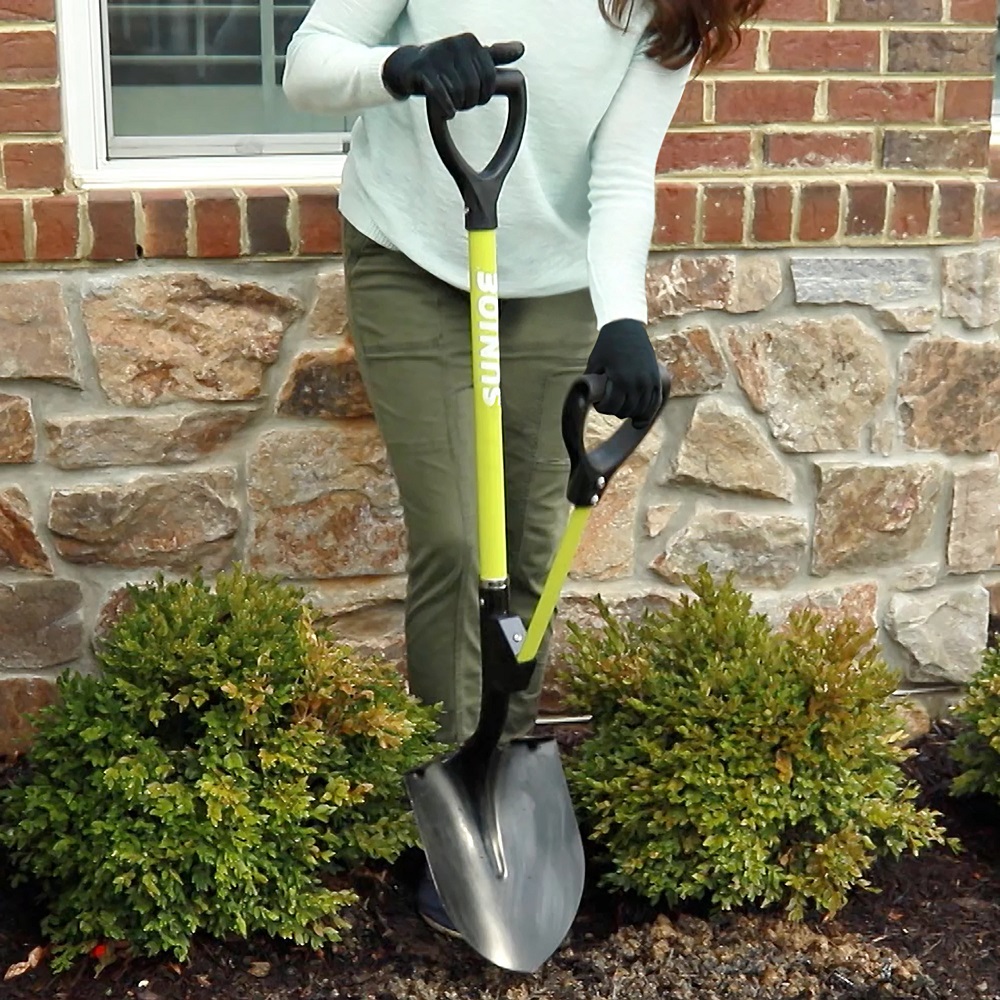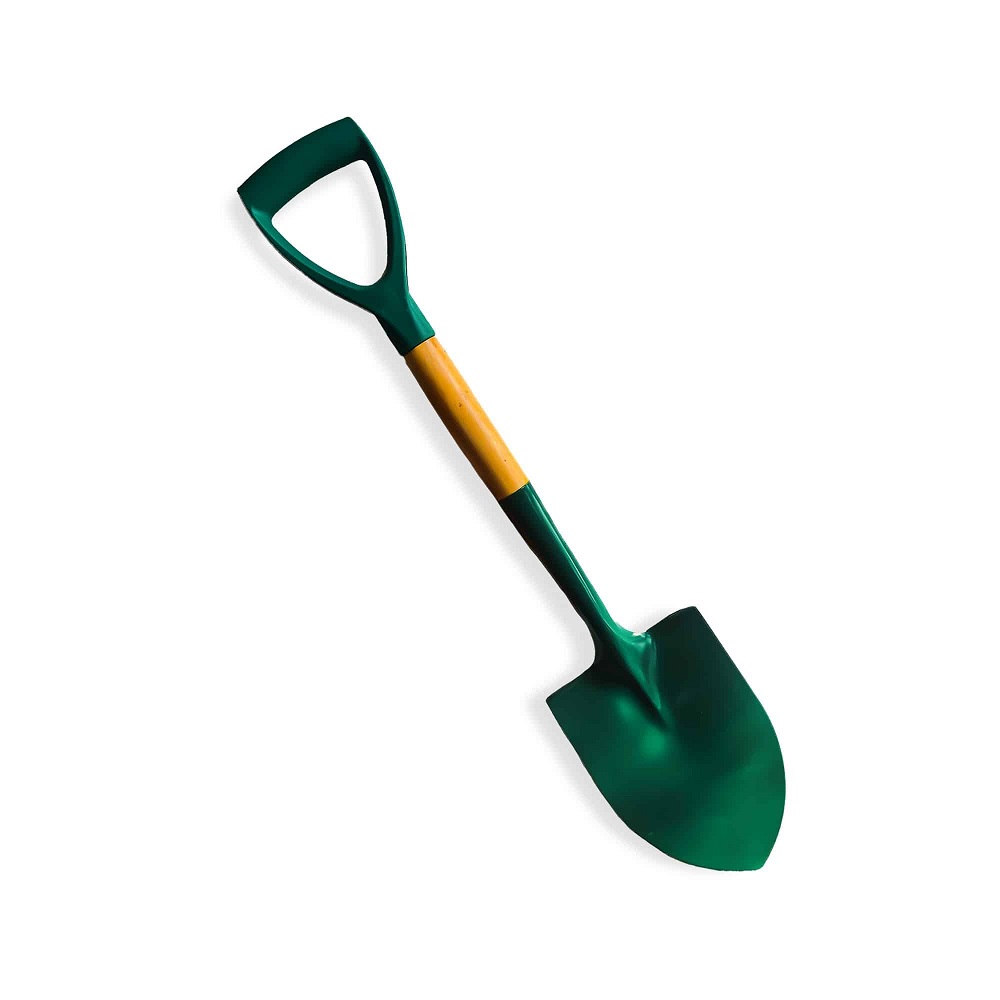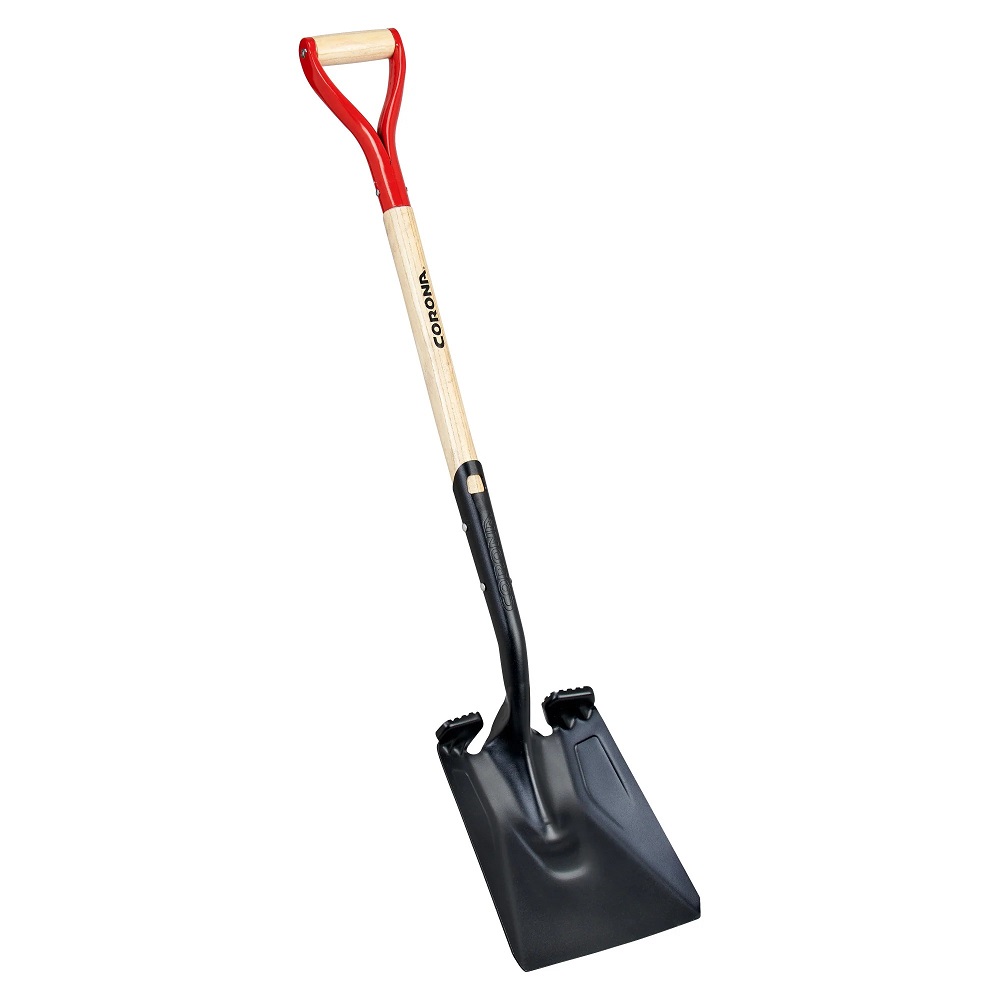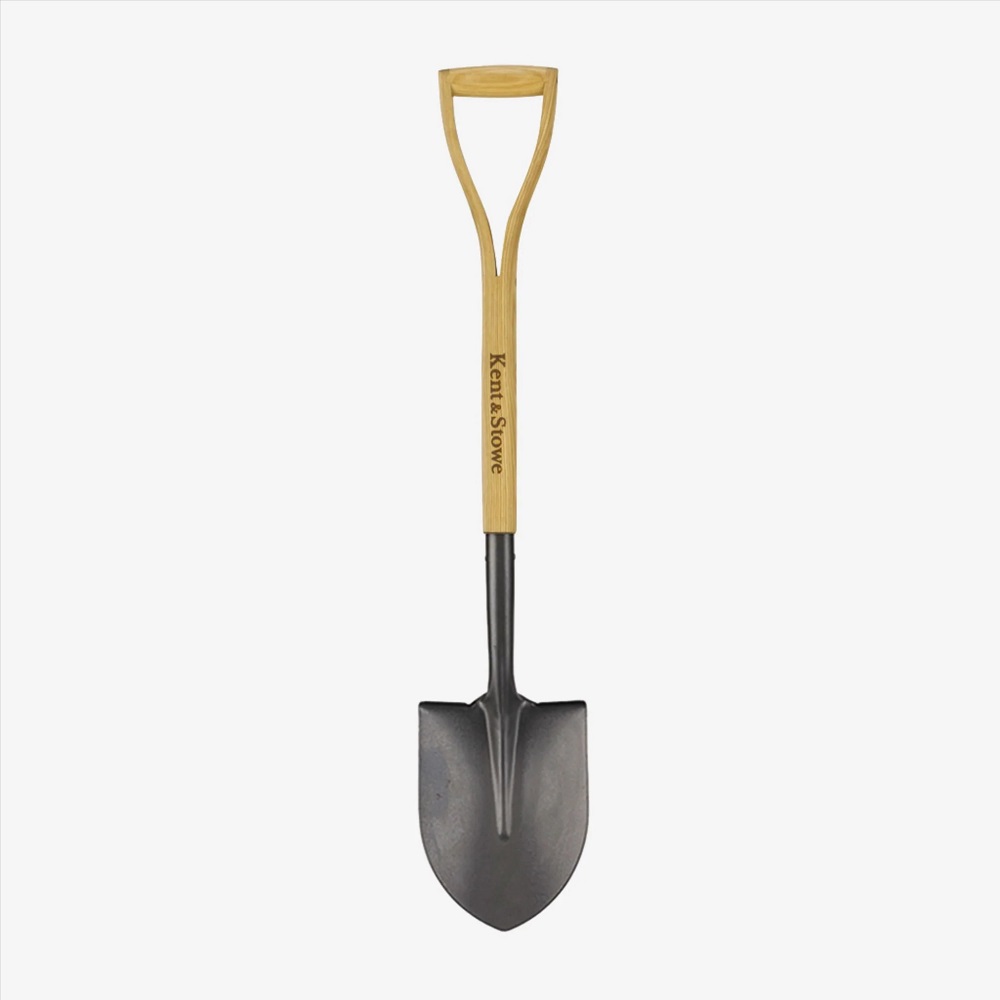Types of Garden Shovels
Garden shovel come in a variety of styles, each designed for specific tasks. Knowing the differences can help you choose the right tool for the job.
Spade vs Shovel
Spades and shovels are often confused, but they serve different purposes. A spade typically has a flat, rectangular blade ideal for edging and slicing through soil. In contrast, a garden shovel often features a rounded or pointed tip, making it perfect for digging and moving loose material.
Trowels for Detailed Work
A trowel is a small garden shovel with a pointed, scoop-shaped blade. It’s best for detailed work, such as planting bulbs, weeding, or transferring small plants.
Scoop Shovels for Bulk Material
When you need to move a large amount of soil, compost, or other bulk materials, a scoop shovel is your best bet. Its wide, flat blade can carry more material with less spillage.
Trench Shovels for Digging
For digging narrow trenches, a trench shovel is essential. Its long, narrow blade cuts deep into the soil, making it ideal for installing irrigation systems or edging landscape areas.

Materials and Durability
When selecting a garden shovel, materials and durability are key factors to consider. The handle and blade materials impact the tool’s lifespan and your comfort during use.
Wooden vs Fiberglass vs Steel Handles
Handle material can greatly affect the weight and resilience of a garden shovel. Here are the pros and cons:
- Wooden Handles: Offer a classic look and feel, wood adds flexibility and is eco-friendly. However, they may rot or splinter over time.
- Fiberglass Handles: Known for their durability and resistance to weather, they are lightweight yet strong. Fiberglass handles don’t corrode but can be more expensive.
- Steel Handles: Extremely tough and long-lasting, steel handles give extra weight, which can be beneficial for driving the blade into soil but may cause fatigue.
Blade Material Considerations
The blade’s material also plays a significant role in performance.
- Steel Blades: Ideal for heavy-duty work, they are sharp and maintain their edge well. They can rust without proper care, though.
- Stainless Steel Blades: Less prone to rusting, stainless steel is easier to clean and looks good for longer.
- Carbon Steel Blades: Provide strength and durability, carbon steel is often used in professional-grade shovels to handle tough tasks.
When choosing a garden shovel, weigh the durability of materials against the type of gardening you do. Match your tool’s construction with your gardening needs for an optimal experience.
Size and Shape
Selecting a garden shovel that matches the gardener’s size and the task at hand is crucial. A mismatch can lead to discomfort or inefficient gardening. Keeping in mind the size and shape of your garden shovel could significantly enhance your gardening experience.
Choosing the Right Size for Your Needs
When it comes to garden shovels, one size does not fit all. The right shovel size is key to avoiding back strain and maximizing efficiency. Consider these factors:
- Your Height: Taller individuals may require a longer handle to prevent stooping.
- Task Intensity: Lighter tasks might need smaller shovels, while more labor-intensive tasks call for larger, more robust ones.
- Garden Space Size: Larger spaces can accommodate bigger shovels; smaller beds might be more workable with a compact design.
Choosing a shovel that correlates with your physical build and the intended use will increase comfort and productivity.

Blade Shapes and Their Uses
Blade shape is another important consideration. Here are common shapes and their advantages:
- Pointed Blades: Ideal for breaking up hard soil and digging into tough ground.
- Round Blades: Best for moving loose, soft soil or for digging holes.
- Flat Blades: Serve well for edging, slicing roots, and undercutting sod.
- Square Blades: Work well for scooping and transfer of soil and other materials.
Identifying the tasks you perform most will help determine the best blade shape for your garden shovel. This ensures that the tool not only fits your environment but also amplifies your gardening capabilities.
Ergonomic Design and Comfort
Gardening can be a joy when equipped with the right tools. Ergonomic design plays a crucial role in reducing strain and increasing comfort during use. The design of a garden shovel, especially its handle length and grip, contributes to the overall ergonomics, helping to decrease fatigue and the potential for injury.
Handle Length and Grip
Choosing the right handle length for your garden shovel is vital for comfort and efficiency. Here’s what you need to consider:
- Your Height: Tailor your shovel’s handle to your stature for a natural posture while digging.
- Type of Gardening: Specific tasks may require different handle lengths for optimal control and comfort.
Meanwhile, a comfortable grip minimizes hand and wrist stress. Look for features such as:
- Cushioned Grips: These provide a softer touch, which can help if you have long gardening sessions.
- Non-slip Surfaces: They ensure stability and safety when your hands get sweaty or the weather turns wet.
D-Grip vs Straight Handle
The handle’s shape is also essential for maneuvering your garden shovel with ease:
- D-Grip Handles: Offer better control and less wrist twist when lifting heavy loads or digging vigorously.
- Straight Handles: These are often lighter and can be easier for tasks like turning soil or spreading mulch.
Aim for a shovel handle with an ergonomic design, aligning with your specific gardening needs, and most often performed tasks. This will maximize your garden work’s effectiveness—and your enjoyment of creating beautiful outdoor spaces.

Maintenance and Care for Longevity
Proper maintenance of your garden shovel can extend its life and maintain its performance. Here’s how you can take care of your tool:
Cleaning and Storing Your Shovel
After each use, clean off any soil or debris from your garden shovel. Use a stiff brush or hose to remove dirt. Dry the shovel to prevent rust, especially on steel blades. Store it in a dry place, hanging up if possible to reduce blade damage and handle stress.
Avoid leaving your garden shovel exposed to the elements. Sun, rain, and snow can weaken the handle and cause metal components to corrode. If wooden handles are worn or splintered, sand them smooth to avoid injuries. For fiberglass and steel handles, regularly check for cracks or signs of wear.
Sharpening the Blade
A sharp blade makes digging easier and causes less fatigue. Use a metal file to sharpen the edge, following the original angle of the blade. Do this at least once a season or when you notice digging is more challenging. For best results, use smooth, even strokes when sharpening.
Remember not to over-sharpen, as this can weaken the blade. After sharpening, apply a light coat of oil to protect the blade from rust. Whether it’s a spade, scoop, or trench shovel, keeping it sharp will ensure it works effectively when you need it.
By routinely cleaning, storing, and sharpening your garden shovel, you’ll improve its efficiency and extend its lifetime. These simple steps save you time and money in the long run, making them an integral part of your gardening practices.
Innovative Features
The right garden shovel can transform gardening into a more efficient and pleasurable activity. Modern shovels come with innovative features that cater to a variety of needs and enhance user experience.
Multi-Function Shovels
Multi-function garden shovels are versatile tools designed for multiple tasks. They may combine several features such as:
- A serrated edge for cutting roots.
- Measurements on the blade for planting depth.
- Foldability for easy storage and portability.
- Interchangeable heads for different tasks.
With these shovels, you save space and money by having one tool that performs many jobs. They are ideal for gardeners who have limited storage or who prefer a minimalist approach to their garden tool collection.
Cutting Edges and Foot Pads
Modern garden shovels may also include cutting edges and foot pads. Cutting edges are sharpened sections on the blade that make it easier to cut through tough soil and roots. This reduces strain on the gardener’s hands and back.
Foot pads, on the other hand, provide a wider area to apply pressure with your foot. This allows for more force when digging, which also helps reduce fatigue. The pads often feature a non-slip surface for added safety and efficiency.
These innovative features in garden shovels offer gardeners enhanced functionality, comfort, and efficiency. Whether you’re an amateur or a seasoned gardener, these features can make a significant difference in your gardening routine.
Purchasing Tips
When shopping for a garden shovel, it’s crucial to make informed choices. This section provides helpful tips to ensure you get tools that meet your needs and budget.
Quality Brands and Warranty
Look for reputable brands known for quality garden tools. These companies often back their products with warranties, giving you peace of mind. A good warranty can cover defects and sometimes even wear and tear. Check warranty details before buying, as they can save on future costs if issues arise.
Trusted brands may charge more, but their tools often last longer and perform better. Investing in a well-made shovel from a respected brand can result in long-term savings.
Getting the Best Value for Your Money
To get the best value, compare prices and reviews. Look for sales or discounts, especially during off-season periods. Consider the tool’s features against the price to determine if it matches its value. A higher price doesn’t always equal better quality, so read reviews from other gardeners. They provide real insights on performance and durability.
Buy only the types of shovels you’ll use. Owning a multipurpose shovel may cost less than multiple specialized tools. Make sure the garden shovel feels comfortable and fits your body size and gardening tasks. A good fit helps avoid discomfort and increases efficiency. Remember, the right garden shovel is an investment in your gardening success.
